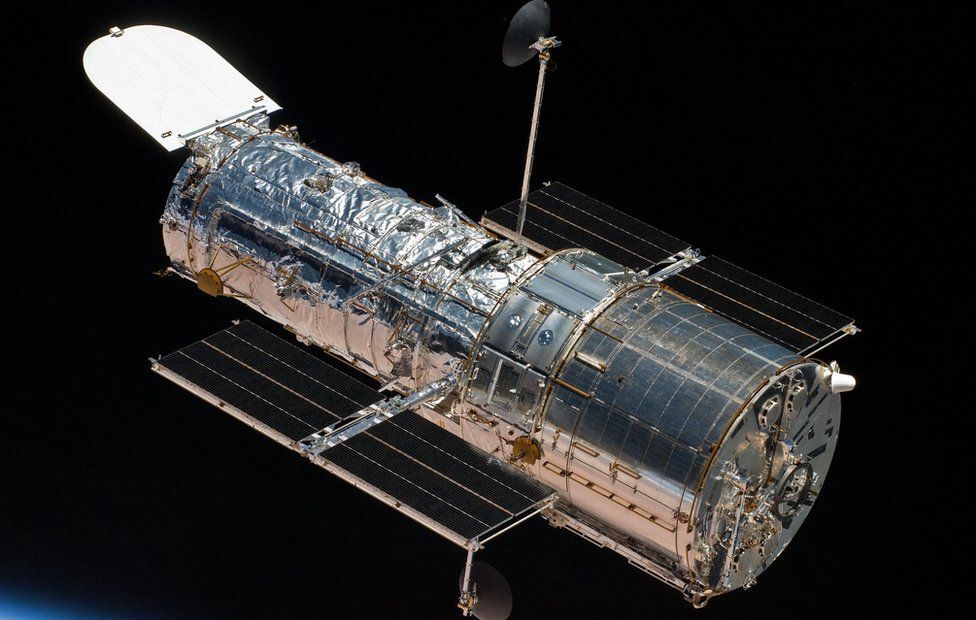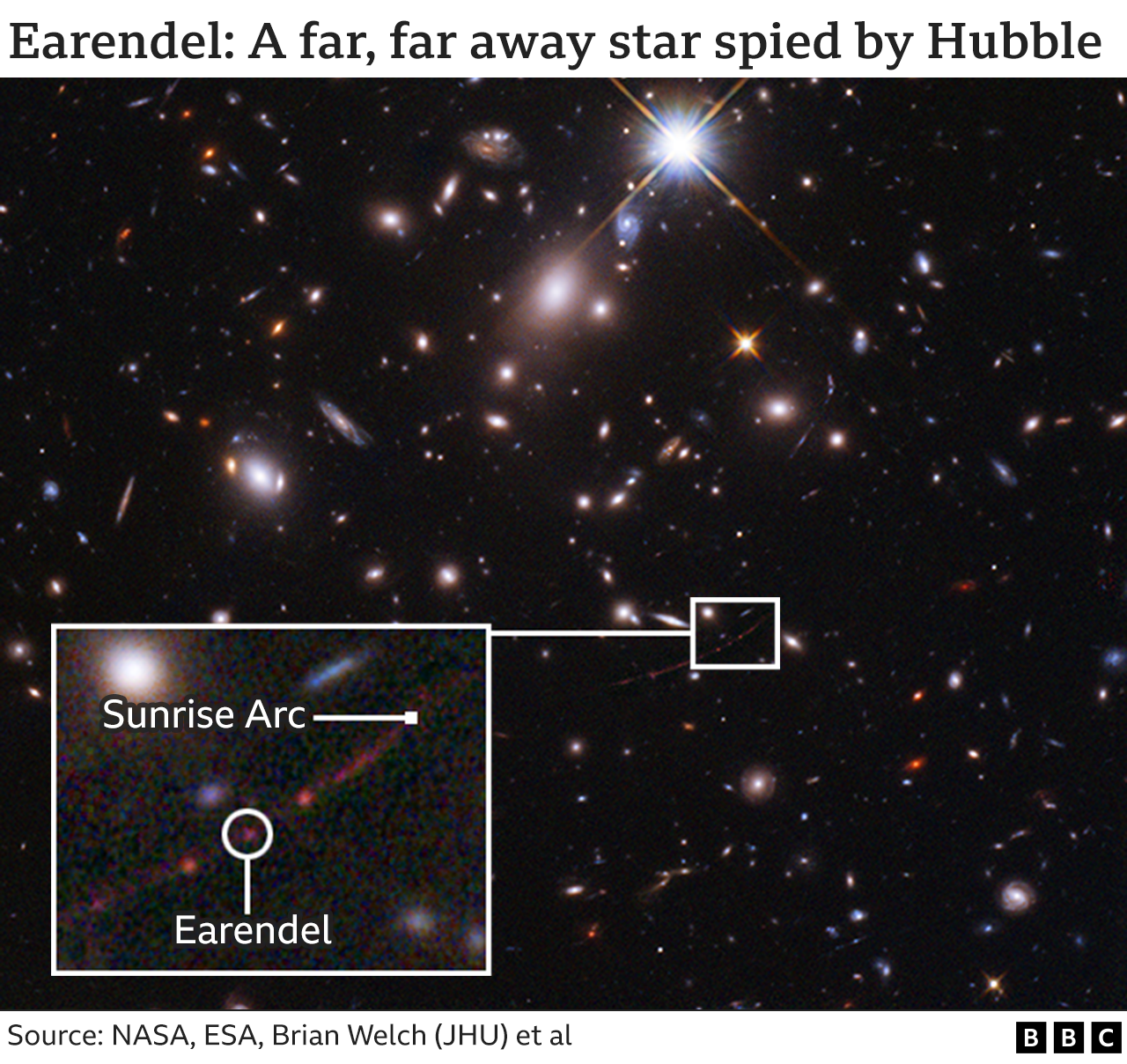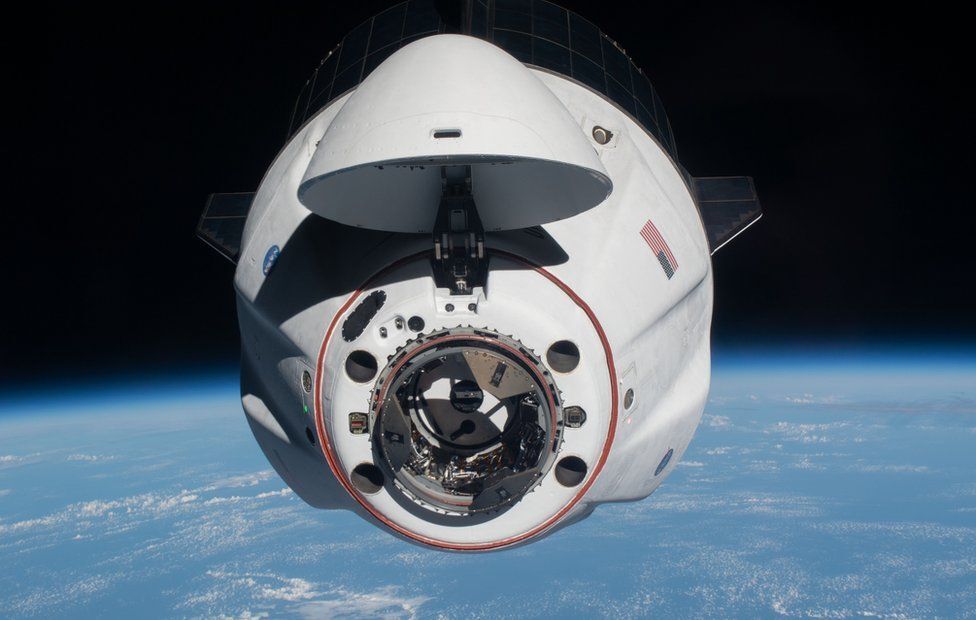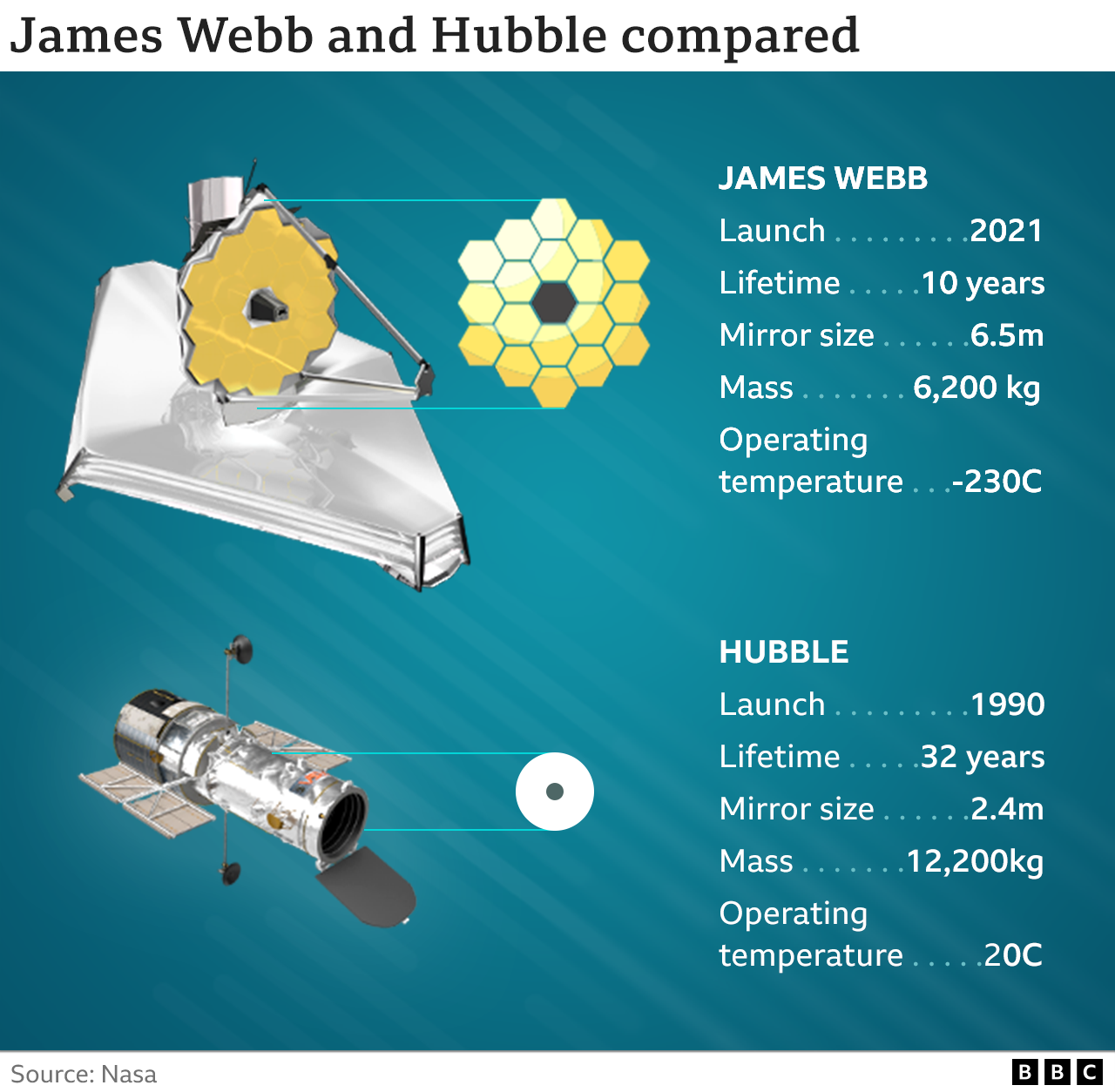1.10.2022

Nasa and the SpaceX rocket company are to study the feasibility of running a private astronaut mission to extend the life of the Hubble telescope.
The orbiting observatory, one of the greatest instruments in the history of science, is gradually losing altitude.
If nothing is done to re-boost it, the telescope will eventually fall into the atmosphere and burn up.
Hubble was serviced on five occasions by astronauts in Nasa's space shuttle, the last time being in 2009.
Since then, the telescope has come down by about 25km and now circles the Earth at a height of 540km.
Ideally, Nasa would like to get the observatory back up to the 600km altitude where it was positioned at launch in 1990.
This might give it an additional 20-30 years of life, although longevity would also be heavily dependent on the continued good operation of the telescope's systems and, in particular, its four instruments.

Hubble has been a hugely productive astronomical tool. Over its career to date it has made more than 1.5 million observations, resulting in the publication of some 19,000 scholarly research papers.
Just this year, it has spied the single most distant star in the Universe; imaged the largest comet ever identified; and played a role in documenting this week's crash into an asteroid by the Dart probe.
Nasa launched its successor, the James Webb telescope, at the end of last year, but the hope has been that the pair could work together for many years to come.
The study will examine how Elon Musk's company might send a commercial crew in one of its Dragon capsules to Hubble, not just to push the telescope higher in the sky but also to service some of its hardware.
Repair and upgrade work could include the replacement of the gyroscopes used to point the telescope at stars and galaxies and which have shown a tendency to fail over time.
"I want to be absolutely clear, we're not making an announcement of a date, or that we'd definitely go forward with a plan like this. But we want to have a study to see really what would be feasible," said Thomas Zurbuchen, the director of science at Nasa.

Currently, SpaceX uses its Dragon capsules to ferry astronauts to and from the International Space Station. But Jessica Jensen from SpaceX said Hubble would be a different proposition.
"It's in a different orbit, different mass, they're different vehicles. The details of proximity operations - that's going to be a little bit different; it'll all be unique to the telescope," she told reporters.
"We're just looking forward to studying what's possible and what's needed and working all this in coordination with Nasa."
One factor that would help Dragon is the "capture ring" attached to Hubble by the last shuttle mission in 2009.
This mechanism was intended to enable a future robotic craft to grab hold of the 12-tonne telescope and pull it out of the sky for controlled disposal in the South Pacific Ocean.
The same ring could now alternatively be the means a Dragon capsule uses to lock on to Hubble and push it upwards.

"We certainly wouldn't anticipate (a Dragon mission) being at the level of complexity of servicing missions that were accomplished with the shuttle and Nasa astronaut crews from the past, but we are excited to look at what opportunities are available with our commercial partners," said Patrick Crouse, Nasa's Hubble Space Telescope project manager.
Assisting in the study will be entrepreneur and billionaire Jared Isaacman, who commanded the all-civilian "Inspiration4" mission to orbit in a Dragon capsule last year. He has a programme called Polaris that aims to push forward commercial space technologies.
"With the James Webb telescope now online, Hubble's mission has only gained in importance. It's absolutely exciting to think about the possibility of extending the life and capabilities of one of our greatest explorers," Mr Isaacman said.
Quelle: BBC
+++
NASA and SpaceX signed an unfunded Space Act Agreement Thursday, Sept. 22, to study the feasibility of a SpaceX and Polaris Program idea to boost the agency’s Hubble Space Telescope into a higher orbit with the Dragon spacecraft, at no cost to the government.
There are no plans for NASA to conduct or fund a servicing mission or compete this opportunity; the study is designed to help the agency understand the commercial possibilities.
SpaceX – in partnership with the Polaris Program – proposed this study to better understand the technical challenges associated with servicing missions. This study is non-exclusive, and other companies may propose similar studies with different rockets or spacecraft as their model.
Teams expect the study to take up to six months, collecting technical data from both Hubble and the SpaceX Dragon spacecraft. This data will help determine whether it would be possible to safely rendezvous, dock, and move the telescope into a more stable orbit.
“This study is an exciting example of the innovative approaches NASA is exploring through private-public partnerships,” said Thomas Zurbuchen, associate administrator for the Science Mission Directorate at NASA Headquarters in Washington. “As our fleet grows, we want to explore a wide range of opportunities to support the most robust, superlative science missions possible.”
While Hubble and Dragon will serve as test models for this study, portions of the mission concept may be applicable to other spacecraft, particularly those in near-Earth orbit like Hubble.
Hubble has been operating since 1990, about 335 miles above Earth in an orbit that is slowly decaying over time. Reboosting Hubble into a higher, more stable orbit could add multiple years of operations to its life.
At the end of its lifetime, NASA plans to safely de-orbit or dispose of Hubble.
“SpaceX and the Polaris Program want to expand the boundaries of current technology and explore how commercial partnerships can creatively solve challenging, complex problems,” said Jessica Jensen, vice president of Customer Operations & Integration at SpaceX. “Missions such as servicing Hubble would help us expand space capabilities to ultimately help all of us achieve our goals of becoming a space-faring, multiplanetary civilization.”
The Hubble Space Telescope is a project of international cooperation between NASA and ESA (European Space Agency). NASA's Goddard Space Flight Center in Greenbelt, Maryland, manages the telescope. The Space Telescope Science Institute (STScI) in Baltimore, Maryland, conducts Hubble science operations. STScI is operated for NASA by the Association of Universities for Research in Astronomy in Washington.
Quelle: NASA


